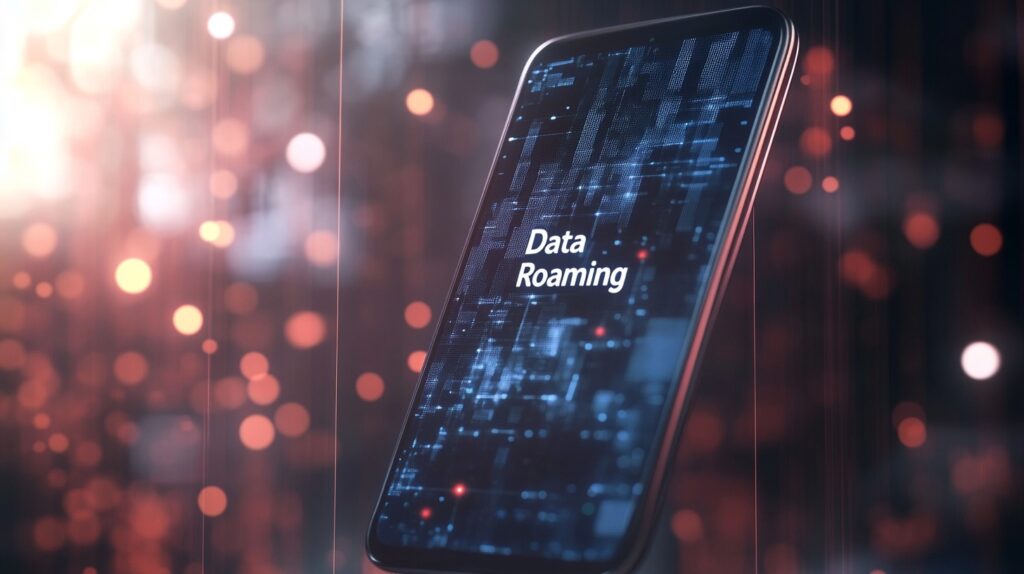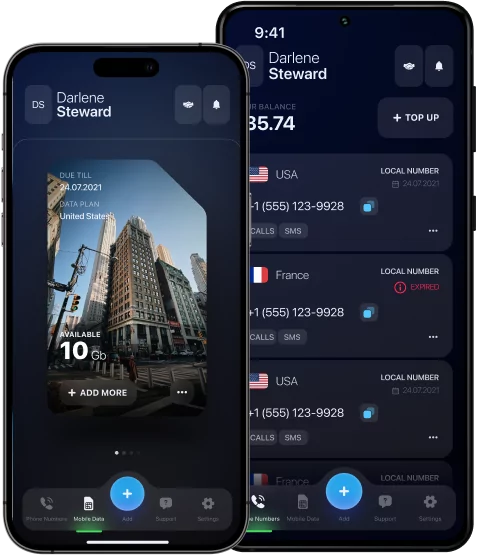What is Data Roaming?

Data roaming is a type of roaming that allows users to transfer and receive datum on an international network. It is especially useful for users who need the unlimited internet while traveling abroad. Data roaming provides access to such features as e-mail, social networks, messengers, and other online services.
When using this type of roaming, it is important to take into account the tariffs of the telecom operator, since the cost of data transmission abroad can be much higher. In addition, there are special options and service packages for more economical use of data roaming abroad.
How Data Roaming Works
Data roaming is actually a very simple concept. You have a mobile operator that transmits data to your smartphone when it is not connected to Wi-Fi. However, as you know, your operator’s network is not unlimited.
So what happens when you go to a place that is not covered by your carrier’s network? That’s where data roaming comes in. Roaming allows you to switch to another network to make calls, send text messages, and use wireless data transmission when your carrier’s network is disconnected.
This usually works based on agreements between your carrier and other networks. The most common scenario in which data roaming takes effect is a trip to a country where your carrier is absent.
What is International Data Roaming?
International data roaming allows you to communicate outside your home country, using towers of foreign telecom operators. Recently, it has become less and less in demand, as most people switch to messengers and social networks.
What is Domestic Data Roaming?
It provides the opportunity to use mobile communications within the same operator’s network in different regions. This type of data roaming is especially useful for those traveling around the country or living within the borders of the same state but often moving between different cities or regions.
Data Roaming on Different Devices
Enabling or disabling data roaming is not particularly difficult; the process depends on which smartphone you have — iPhone or Android.
What is Data Roaming on iPhone?
To connect to data roaming on the iPhone, you need to enable roaming mode in the mobile network settings. This can be done as follows:
- Open Settings on your device.
- Select “Mobile Network”.
- Enable the “Data Roaming” option.
When connecting to data roaming, it is necessary to take into account the cost of transferring data abroad. Usually, mobile operators set additional tariffs for data roaming outside the country. Therefore, before using data roaming, you need to familiarize yourself with the operator’s tariffs and make sure that there is enough money in your account to pay for roaming communication services.
To prevent unexpected data roaming costs, you can use various ways to save traffic, such as disabling automatic image and video downloads, using mobile applications offline, etc.
What is Data Roaming on Android?
As mentioned above, enabling high-speed data roaming is a matter of minutes. The procedure may vary slightly depending on your smartphone model and operating system but the general principle is the same.
- Open the phone’s “Settings” option.
- Select the “Network and Internet” or “Mobile network” section.
- Find the item “Roaming” or “Mobile data roaming”.
- Move the slider to the active position to enable data roaming.

Data Roaming vs. Mobile Data
What is the difference between data roaming and mobile data? Data roaming means that a person subscribed to mobile data can use the network while traveling beyond borders, like towers from other subscribers. In contrast, mobile data is when a user can access the internet if Wi-Fi is unavailable.
The use of a SIM card is minimal but if the user wants to access mobile data, it is necessary to subscribe to it. It costs more money, whereas access to the network outside the borders may cost more.
If mobile data is disabled, internet access is disabled but the SIM card will work for calls and SMS. On the contrary, if data roaming is disabled, the connection will become slow as the user disconnects from other towers.
The best that user chooses from 2G, 3G, 4G, or 5G, the user gets the best in terms of faster download and audio connection, whereas if data roaming is disabled, the network becomes weak because the user does not use the best when connecting to the towers.
If the user uses mobile data within the country, then towers installed by the company are used to obtain the range. On the contrary, if a person travels the world, this is called roaming, which leads to connection to international towers and additional costs.
Benefits and Drawbacks of Data Roaming
There are certain situations where using data roaming makes sense.
- Tourist goals. For example, if you need urgent access to maps, travel information, or translation applications, data roaming can be a real lifesaver. You don’t want to get lost in a strange city or country without an internet connection. Therefore, use roaming wisely if you urgently need to find a way or important information.
- Fast internet access. In addition, roaming can also be used to quickly share travel information or cool photos on social networks. A few dreamy sunset shots on the beach or cute photos from a café will most likely not consume a lot of data.
- Short-term verification of important emails or messages. Feel free to quickly upload important work or family messages. However, it is better not to open files with a large amount of data, such as attachments, which can quickly consume a large amount of data.
- For booking. Data roaming is useful if you need to find interesting places, book accommodation, or find reliable local transport while traveling. With it, you can conveniently search the internet for reviews, book tickets and perform other quick actions.
In many cases, it is more reasonable to simply disable data roaming completely.
- Consumes a lot of data. First, roaming is not your friend if you plan to use a lot of applications and services that require large amounts of data, such as streaming high-definition video or music. Such use of high bandwidth will incredibly quickly eat up the entire amount of data in roaming and lead to insane costs for paying for excess traffic. Therefore, endless playback of Netflix or Spotify abroad is usually impractical.
- Long-term use. Also, if you are abroad for a long period of time, such as several weeks or months, data roaming is rarely a good idea. All this data, transmitted in roaming from day to day, accumulates at lightning speed. To reduce costs, use roaming on long international trips.
- A small package of tariffs. If the operator offers very limited and expensive data roaming, you should not use roaming often. Some operators provide very little data abroad at high rates. In this case, roaming is likely to be too expensive to be useful.

How to Avoid Paying for Roaming?
It is quite possible to avoid data roaming charges. Therefore, do not rush to go broke and declare bankruptcy after another trip. Use the tips below and don’t pay for roaming charges.
- Use Wi-Fi. There are always a lot of free Wi-Fi hotspots in big cities. These can be parks and museums, as well as cafés and shopping malls. If you try hard, you can use free Wi-Fi literally at every step.
- Use a roaming tariff with daily payment. When you arrange roaming, the operator will offer you several favorable tariffs that will help you save on data roaming.
- Buy a local SIM card. In order not to overpay for internet and mobile communication in a foreign country, you can issue a local SIM card upon arrival and use it for the entire vacation.
- Issue an eSIM. The most profitable and easiest way is to pre-register eSIM and forget about roaming and other methods forever. At the same time, stay connected anywhere in the world at affordable prices.
- Do not use data roaming. If you don’t want to pay for roaming, don’t use roaming.
Frequently Asked Questions about Data Roaming
Look at the answers to the most popular questions about data roaming.
What is data roaming used for?
What is the purpose of data roaming? Data roaming is used to ensure that a person is roaming when accessing the internet within national or international borders. A person can access the network outside of their SIM’s registration location by paying an additional amount charged at the end of the month.
When a person is roaming data, they directly use a connection from another network provider, which costs more money. However, the company must have a connection with the provider.
What happens if Data Roaming is on?
If data roaming is enabled, then when you are outside the coverage area of your mobile operator’s network, a third-party operator’s network is used to access the internet. However, at the same time, additional costs or fees arise due to the use of another network.
What happens if Data Roaming is off?
Turning off data roaming can help save a lot of money that would otherwise have to be spent on using a third-party network in another country. However, with roaming turned off, data will not work abroad unless you have connected a local SIM card.
How can I tell if my device is Roaming?
Check your phone’s settings by following the instructions described above.





